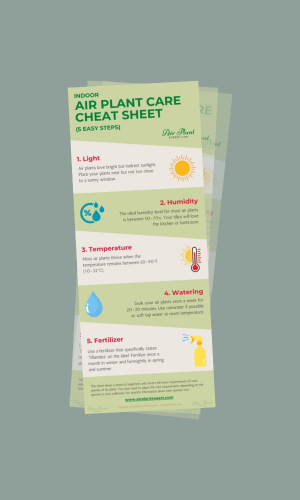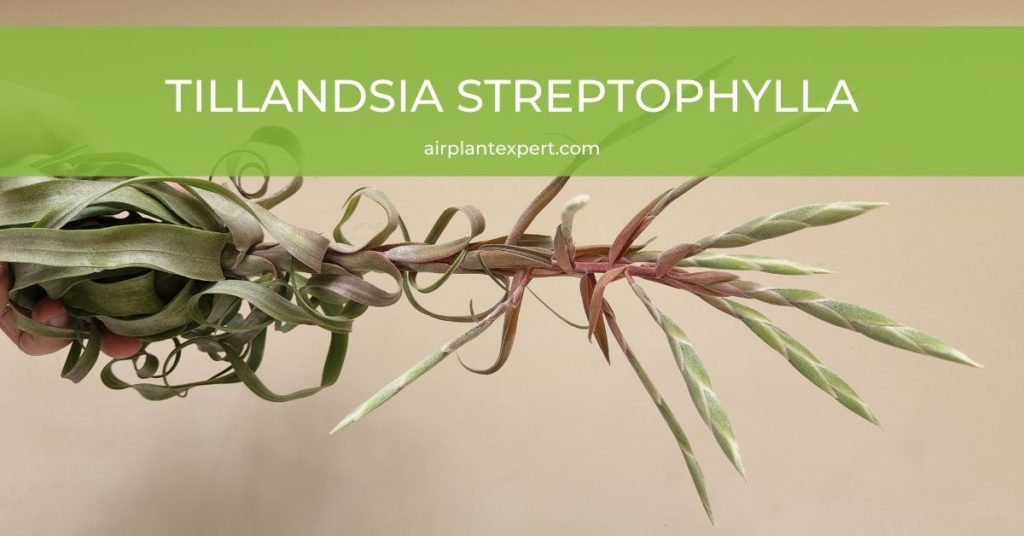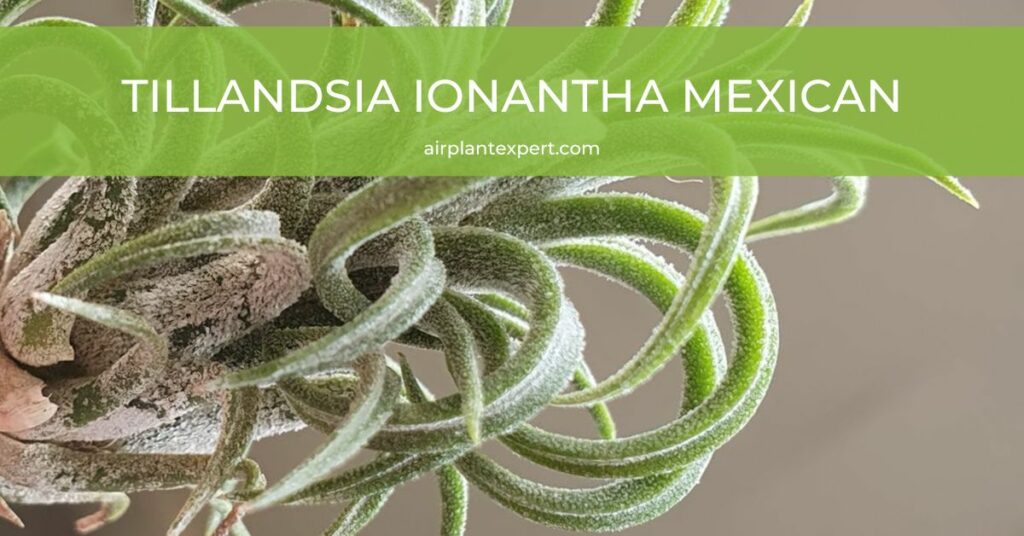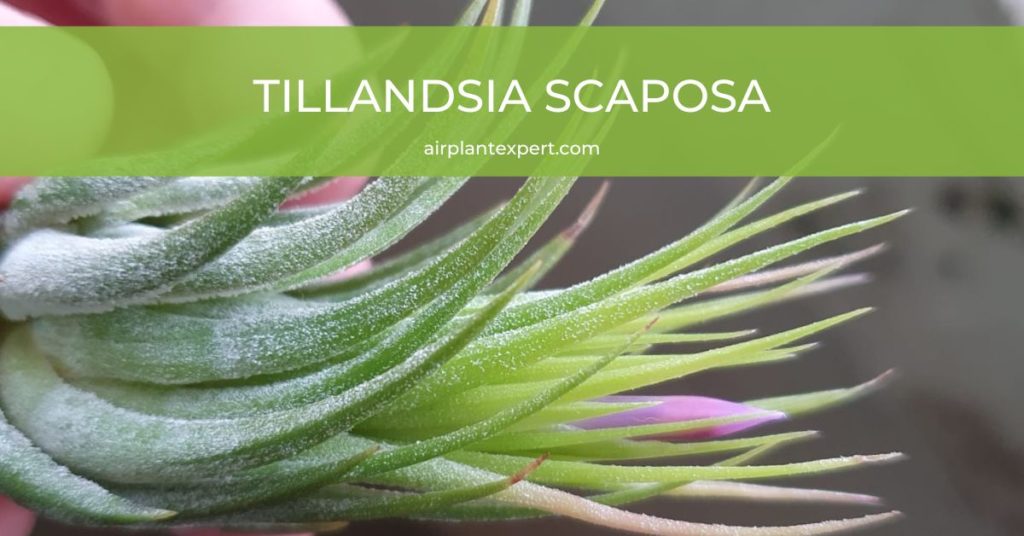One of the most popular air plants, Tillandsia Streptophylla has twisting pastel-green leaves that curl downwards and form a loop when the plant is dehydrated, much to the owner’s delight.
Quick Guide
How To Care For Tillandsia Streptophylla
Streptophyllas are easy to care for and quite robust. This species prefers high levels of light, and regular misting, and thrives in low humidity, so it’s an easy plant to grow indoors.
The thick pastel-green leaves have a tendency to curl downwards under the base of the plant and often provide shelter or a breeding site for ants. This doesn’t harm the plant so I let the ants go about their business.
Tillandsia Streptophylla is surprisingly light considering its size and can be mounted anywhere or placed directly on a bowl or shelf. You won’t be disappointed by this unusual-looking species.
How To Water Tillandsia Streptophylla
The name “Streptophylla” means “with twisted leaves”, and gives rise to the plant’s nickname “Shirley Temple” because the leaves also become very curly and hair-like when the plant gets dehydrated.
The longer you leave the plant in between watering the more the leaves curl up and form into tight ringlets. This is normal behavior and easily rectified by soaking the plant in water for a couple of hours to rehydrate.
Tillandsia Streptophylla requires less water than most air plants and is prone to rot. I recommend weekly dunking instead of soaking and remember to shake the plant afterward to help remove any excess water.
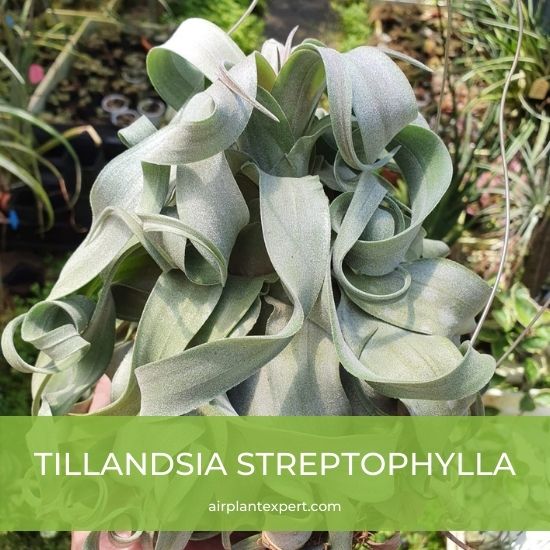
How To Propagate Tillandsia Streptophylla
After blooming, Streptophylla uses its remaining energy to produce several pups/offsets. Before attempting to remove the pups I like to soak the plant for about one to two hours.
This helps to straighten any curly leaves and makes it easier to remove the pups. I use a sharp sterile knife or a decent pair of scissors and gently pull the pup away from the parent plant.
Be careful not to overwater the pups as they’re also prone to rotting. Misting twice a week should be sufficient during the first few weeks of care.

Get Your FREE Air Plant Care Cheat Sheet
5 easy steps to keep your air plants happy and healthy.
Flowers And Expert Tips
It’s not just humans that are attracted to Tillandsia Streptophylla’s tall flowering stalk. Hummingbirds are regular visitors and are attracted to the tall, green, and pink inflorescence.
The inflorescence/flower stalk grows quite large and has salmon-pink primary bracts that give way to the plants contrasting bright green flower bracts, and look amazing and the flower stalk can grow up to 12″ tall.
In full bloom, the frosted leaves, and pink and bright green bracts, sprinkled with contrasting rich purple flowers, make this species a joy to behold.
Tillandsia Streptophylla Hybrids
Streptophylla is native to Guatemala and Mexico and looks incredible in its natural state. However, this species is also known for its many hybrids. I have listed some of the more well-known and loved hybrids below.
On my last count, there were more than twenty hybrids currently available.
- Tillandsia ‘Eric Knobloch’
- Tillandsia ‘Curly Slim’
- Tillandsia ‘Love Knot’
- Tillandsia ‘Redy’
- Tillandsia ‘Como’
- Tillandsia ‘Double Delight’ or ‘Lucille’.
One of my favorite hybrids is Tillandsia ‘Eric Knobloch’. The leaves blush a beautiful rose color as the plant matures and the color often remains all year round.
Now, air plant enthusiasts around the world would be very upset with me if I didn’t mention the magnificent Tillandsia ‘Curly Slim’. Just buy one, trust me, you won’t be disappointed.

